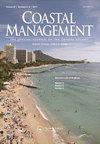印度尼西亚海洋保护区网络:进展、经验教训和覆盖东部六省的网络设计案例研究
IF 1.9
4区 环境科学与生态学
Q4 ENVIRONMENTAL SCIENCES
引用次数: 7
摘要
印度尼西亚是世界上最大的群岛国家,拥有17,504个岛屿,108,000公里的海岸线和世界上15.8%(27,255平方公里)的珊瑚礁。本文回顾了印度尼西亚海洋保护区(MPAs)和海洋保护区网络的现状,吸取了经验教训,并强调了从东部六个省份的715渔业管理区(FMA)海洋保护区网络的设计中学到的经验,作为如何将此类工作适用于该国其他地区和其他地方的一个例子。在全国范围内,235622平方公里的海洋保护区大部分面积大(平均2380平方公里),有使用区和小禁渔区(< 15%)。海洋保护区由省级政府或两个国家机构之一实施。2016年,FMA 715海洋保护区网络的设计始于14个海洋保护区,覆盖1,977,276公顷,占FMA 715海洋水域的4%。目前,规划区内共有48个海洋保护区,总面积达3,062,206公顷,设计过程还确定了额外的44个兴趣区,需要建立新的海洋保护区,以补充FMA 715中现有的海洋保护区,以实现加强渔业、保护生物多样性、适应气候变化,同时支持社区生计和传统习俗的目标。在这个过程中发现的问题是,所需的科学和管理的规模和复杂性超出了大多数利益相关者能够轻易理解的范围;这种实施跨越了多个司法管辖区,对规划和管理大型网络区域的正式授权仍然是新的;而且,目前的进程只有在外部专业人员的协助下才能实现。最后,由于国家自然保护机构目前正在最终确定规划和实施地方海洋保护区网络的法律指导方针,这一过程教育了许多人,其结果将为FMA 715海洋保护区网络和其他领域的继续规划和实施提供法律和治理支持。本文章由计算机程序翻译,如有差异,请以英文原文为准。
Marine Protected Area Networks in Indonesia: Progress, Lessons and a Network Design Case Study Covering Six Eastern Provinces
Abstract Indonesia is the largest archipelagic nation in the world with 17,504 islands, a coastline of 108,000 km and 15.8% (27,255 km2) of the world’s coral reefs. This paper reviews the status of marine protected areas (MPAs) and networks of MPA in Indonesia, draws on lessons learned, and highlights what has been learned from the design of a network of MPAs for Fisheries Management Area (FMA) 715 across six eastern provinces as an example of how such work can be adapted for other parts of the country and elsewhere. Nationally, the 235,622 km2 of MPAs are mostly large (average 2,380 km2) with use zones and small no-take areas (<15 percent). MPAs are implemented by provincial governments or one of 2 national agencies. The design of a network of MPAs across FMA 715 began with 14 MPAs covering 1,977,276 ha or 4% of the marine waters of FMA 715 in 2016. Now there are 48 MPAs covering 3,062,206 hectares in the planning area, and the design process identified an additional 44 Areas of Interest required to establish new MPAs to augment the existing MPAs in FMA 715 to achieve the objectives of enhancing fisheries, protecting biodiversity, adapting to climate change while supporting community livelihoods and traditional practices. Issues identified in the process are that the scale and complexity of science and management needed is beyond what most stakeholders can easily comprehend; that implementation cuts across multiple jurisdictions with a still-new formal mandate for planning and managing the large network area; and, that the present process could only be possible with outside facilitating expertise. Finally, since the national conservation agency is currently finalizing legal guidelines for the planning and implementation of sub-national networks of MPA, this process has educated many and the result will lend legal and governance support to the continued planning and implementation of the FMA 715 MPA Network and for other areas.
求助全文
通过发布文献求助,成功后即可免费获取论文全文。
去求助
来源期刊

Coastal Management
环境科学-环境科学
CiteScore
6.00
自引率
0.00%
发文量
24
审稿时长
>36 weeks
期刊介绍:
Coastal Management is an international peer-reviewed, applied research journal dedicated to exploring the technical, applied ecological, legal, political, social, and policy issues relating to the use of coastal and ocean resources and environments on a global scale. The journal presents timely information on management tools and techniques as well as recent findings from research and analysis that bear directly on management and policy. Findings must be grounded in the current peer reviewed literature and relevant studies. Articles must contain a clear and relevant management component. Preference is given to studies of interest to an international readership, but case studies are accepted if conclusions are derived from acceptable evaluative methods, reference to comparable cases, and related to peer reviewed studies.
 求助内容:
求助内容: 应助结果提醒方式:
应助结果提醒方式:


